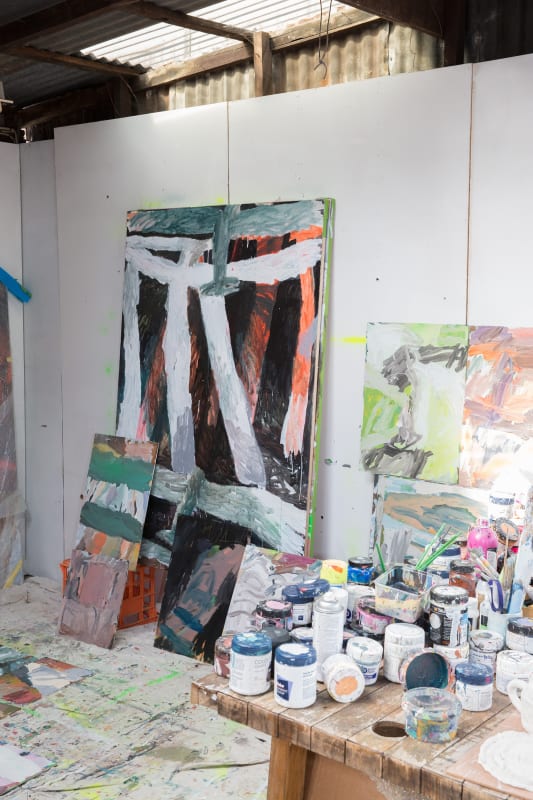Lauren O'Connor's "Eating Wild Honey" invites us to travel both out across this country's diverse landscape, and further inside our own sensory and affective lives.
Lauren O’Connor’s Twin Falls (Wodi Wodi Country), 2022, is tremulous: energetic, almost rapturous movements of the paintbrush across the canvas capture the vibratory energy of the landmark in the work’s title. The vertical logic of the painting is punctuated by occasional horizontal movements – both surprising and totally inevitable – as a deep, beating red emanates from beneath a field of blues. Individual brushstrokes curl and coalesce, appearing to writhe with a life of their own. The work is infused with the experience of being in place, but moves beyond simple representation – that representation which marks make on maps – and into deeply expressive territory.
Just as this painting is all movement, so too is much of O’Connor’s practice. The artist, who grew up in Kangaroo Valley and is now based in Sydney, uses painting en plein air as a vital mode of working as she moves across vast and various landscapes. Her recent travels have included a journey across Kamilaroi land to Bingara, through Moree and the Gwydir River, and to Bright, further south in Victoria, painting and sketching her surrounding environments as she moved. The impressions of these landscapes on O’Connor’s works are both more and less literal: they appear as warm umber and clay tones amongst pinks and lilac purples, and as the fleeting figures of tree trunks, waterways, or even horizon lines.
O’Connor’s painting is deeply intuitive, and based on the “sense-making” of the artist’s mind and hand as much as it is the “sensory” world to which it responds. As Elli Walsh writes, in the catalogue text for this exhibition, “Spontaneous drips and splatters, studio detritus and accidents collide with the controlled, intentional marks that scaffold each work.” Processes of experimentation and chance, always grounded in the embodied presence of the artist with the work, are woven into the dense layering O’Connor’s paint. Indeed, we might understand these paintings as being “about” their own process of creation, as they ask us, earnestly, to consider the relationship between their strong structural elements and the improvisatory movement of paint which ebbs and flows around them.
The other place that is important in these works, then, might be the studio itself. This is the crucible, after all, where O’Connor’s communion with the natural world (fraught though this is, of course, in an Australian context) and her connection with materials – with paint and with canvas – can themselves come together. Created with warmth emanating from both heart and hand, these softly emotive works layer states of feeling and of being-in-relation on top of each other, like delicate gauze.

